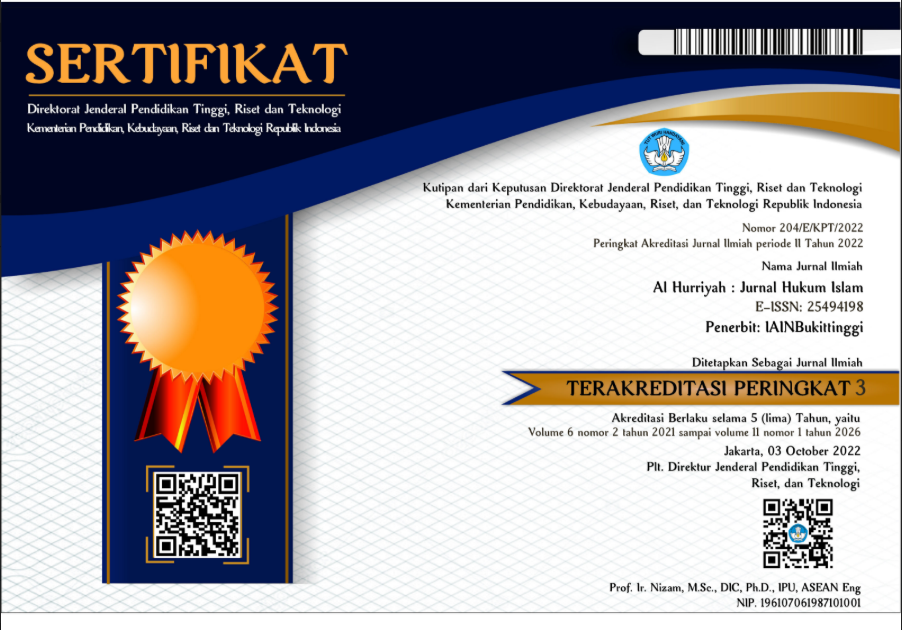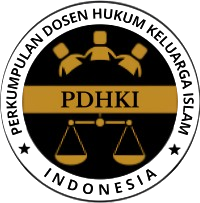ADDITIONAL MENU
Author Guidelines
Al-Hurriyah: Jurnal Hukum Islam provides guidance to authors before the process of submitting article manuscripts.
- The journal invites scholars and experts working in all disciplines in Laws Studies.
- Articles should be original, research-based, unpublished and not under review for possible publication in other journals.
- Format : The manuscript should be typed in Micosoft document format with Baltica with size 12 px, average word count ranges from 5000 - 7000 words. All manuscripts should be sent to submited to open journal system (OJS) https://ejournal.uinbukittinggi.ac.id/index.php/alhurriyah.
- Title : The article should be written in Indonesia or English. The title of the article is written not more than 14 words. The title of the article, the name of its author or authors, email address, and institution are on the top of article.
- Abstract : All submissions must include 150-250 words abstract and 3-7 keywords. The abstract of the research paper should contain title, purpose, method, and result.
- Quotations, passages, and words in local or foreign languages should be translated into English.
- Full research papers have broad relevance and contribute something new to Educational Studies. It includes:
- Introduction : To explain the theoretical background, related research, the practical applications and the nature and purpose of the article.
- Method : This section describes in detail the methodology used in the study, including the research design, samples, tools and materials, and procedures performed. A detailed and clear explanation allows the study to be replicated by other researchers, which is one of the basic principles of good scientific research.
- Results and Discussion: The results section presents the data and findings from the research, while the discussion section interprets the results in the broader context of the research. Results should be presented objectively and supported by relevant data, while the discussion should relate the findings to the existing literature, point out the implications of the findings, and discuss the limitations of the study.
- Conclusion: The conclusion summarizes the main findings of the research and provides a strong statement regarding the contribution of the research to existing knowledge. This section may also include recommendations for further research or practical implications of the research findings. A good conclusion will give the reader a clear understanding of what the research has achieved.
- References: References are listed in alphabetical order. Each listed reference is cited in the text, and Non-research papers include major themes, logical development of the theme, the author's point of view, implications, inferences, or conclusions.
- References and notes should be written alphabetically as follows:
- References. The literature listed in the References contains only the sources referenced or included in the article. Please use Reference Manager such as mendeley software.
- Referral sources should provide 80% of journal articles, proceedings, or research results from the last five years. Writing techniques bibliography, using the Citations and references follow the Chicago Manual of Style 17th edition (full note)) style.
- All submitted papers are subject to a review of the editors, editorial board, and blind reviewers.
- The editors reserve the right to reject manuscripts that are not in accordance with this guideline.
- All URL addresses in the text are activated.
- Author of articles published will receive free one copy of the journal and ten off-prints.
- The text address the stylistic and bibliographic requirements outlined in the outline, which is found in About the Journal.
- The names and email addresses entered in this journal site will be used exclusively for the stated purposes of this journal and will not be made available for any other purpose or to any other party.




